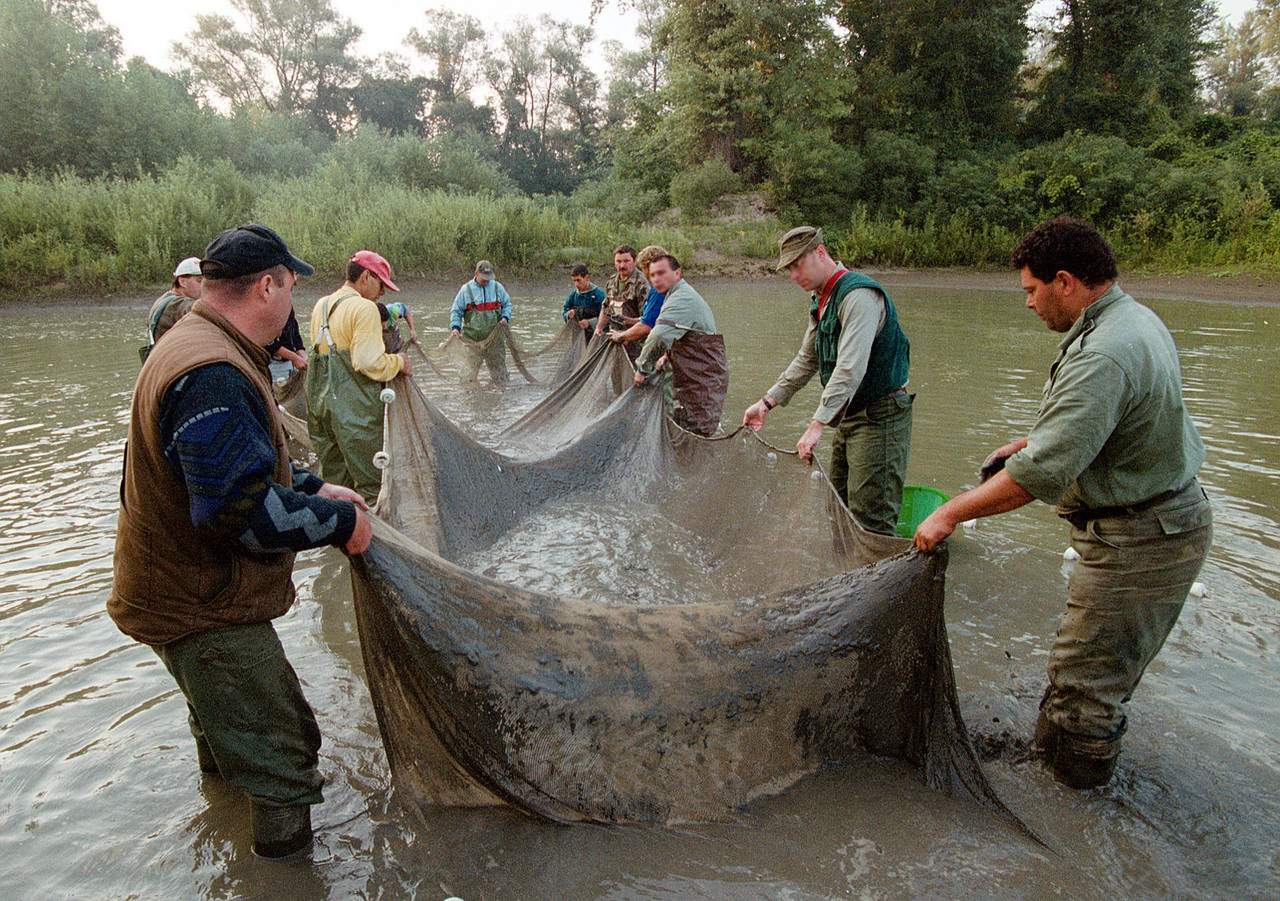Der Einsturz der Deponie von Baia Mare, 2000
Deutscher Text nicht vorhanden
On 30th January 2000 at 22:00 hrs, a breach in the tailings dam of the Aurul S.A. Baia Mare Company, released some 100,000 m3 of cyanide-rich tailings waste into the river system near Baia Mare in north-west Romania (Maramures district).
This spill released an estimated 50-100 tonnes of cyanide, as well as heavy metals, particularly copper, into the rivers Somes, Tisza and finally into the Danube before reaching the Black Sea.
Aurul S.A. is a stock company, jointly owned by “Esmeralda Exploration Ltd.”, Australia, and the Romanian “Compania Nationala a Metalelor Pretiosasi si Neferoase”, established in 1992.
The company processes solid wastes from earlier mining activity to recover precious metals, especially gold and silver.
Aurul S.A. was using a sodium cyanide heap leaching method to extract gold and silver from tailings, or waste piles, which had been previously discarded.
In 1993, the company obtained an environmental permit from the Ministry of Waters, Forests and Environmental Protection.
In 1997, after receiving the site construction permit from the Maramures County Council, construction of the recovering plant commenced.
In 1999, the operational permit, based on an environmental impact assessment (EIA), was obtained.
The company started operation in May 1999, by processing an existing 30 year-old tailings dam (Meda dam) located near Baia Mare to the west and close to the residential area.
The spill was described by Aurul S.A. as follows: After extreme weather conditions (ice and snow on the tailing pond, high precipitation of 36 litres/m2), the tailings deposited on the inner embankment became soaked.
Stability was affected, causing local displacement, and this subsequently developed into a breach of approximately 23 m.
The water released through the breach filled the area between the two embankments and spilled over the outer embankment.
The volume of water released from the dam was estimated to be around 100,000 m3.
Type of incident
- tailings dam crest failure after overflow caused from heavy rain and melting snow;
- release of some 100,000 m3 of cyanide-rich tailings waste contaminated with heavy metals.
- contamination of the Somes/Szamos stream, tributary of the River Tisza;
- contamination and interruption of the drinking water in 24 locations and of 2.5 million people;
- massive fish kill and destruction of aquatic species in the river systems;
- severe negative impact on biodiversity, the rivers’ ecosystems, drinking water supply and socio-economic conditions of the local population;
- High cleanup costs.
Possible causes of the failure
The breach in the retention dam was probably caused by a combination of inherent design deficiencies in the process, unexpected operating conditions and bad weather.
Tailings dams at operating mines are under continuous construction as solid material and effluent (plus natural inflow due to precipitation) are added.
Besides safe control of pond water volume under storm runoff conditions, the safety of the dam is due to a sound balance between dam height and pond water level.
In the case of the new Aurul pond at Baia Mare, the flows of solids and waters were out of balance with the increase of the storage capacity of the pond, as the process of dam construction did not keep up with the rise in the reservoir water level.
There were no provisions, such as water pumps, for coping with situations of a rise of pond water level due to uncontrollable input into the reservoir system.
The climatic winter conditions aggravated the situation leading to an uncontrolled rise of pond level resulting in the overflow of the dam.
The company responded by repairing the breach using borrowed material from nearby, and by adding sodium hypochlorite to the overflow, and to the area flooded by the spill, in order to neutralise the cyanide.
However, a large volume of heavily contaminated effluent escaped before the breach could be closed.
Under Romanian Ministry of Public Works regulations on construction standards, the plant and pond were categorised under regulation as “regular” importance, not requiring any mandatory special surveillance or monitoring.
As far as the local authorities were concerned, they expected an improvement in a long-standing environmental problem; the plant had received all the necessary permits.
A brief review of the evidence suggests that a number of factors contributed to this accident:
- deficiencies in the design of the system (tailings retention dam and cyanide treatment processes) at the Aurul mine, especially as concerns fail-safe features in case of unusual operating conditions;
- deficiencies in the operation of the plant relating to precautions against overflows and spills, and in terms of emergency response plans;
- weak and inappropriate permitting of the facility, and inadequate monitoring and inspection.

